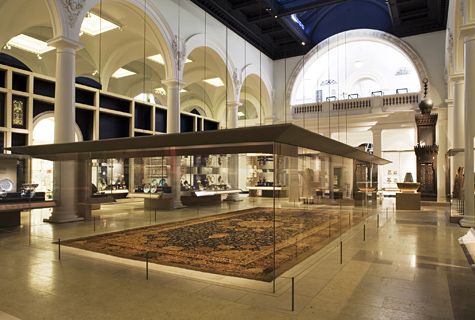The Jameel Gallery of Islamic Art at the V & A, which has been three years in the making, is most sensibly approached as a general introduction to the arts and crafts of the Middle East. The display, beautifully arranged in a light-filled and brilliantly designed new gallery, contains approximately 400 objects from the museum’s total collection of around 10,000. The works in question were produced in the Muslim world over a period of more than a millennium, from the seventh century to the start of the twentieth. Many of the objects on display were created in what can be considered the core of the Middle East, namely the lands between Egypt and Iran. But there are also works from what is now Afghanistan and the former Soviet republics of Central Asia, from North Africa, and from Spain, which was part of the Islamic world until the fall of Granada in 1492. There is, and can be, no pretence that this is a comprehensive overview of such an enormous field. Instead, the visitor is presented with a succession of glimpses into the history of many linked civilisations, as intricately interwoven as the many magnificent carpets, silks and other textiles that are so prominent in the display.
“Islamic Art” is a term sometimes understood to refer exclusively to the religious arts of Islam, but the V&A’s display implies a more open-ended definition. The selection and arrangement of objects implicitly argues for the inclusion of any work of art, created for whatever purpose, in any culture where Islam played a dominant role. Prominent place is rightly given to the many masterly pages from the Qur’an held by the V&A, as well as to the spectacular minbar, or pulpit, created for a great mosque at the end of the fifteenth century, probably in...

The New(ish) Jameel Gallery of Islamic Art at the V&A
23-07-2006

